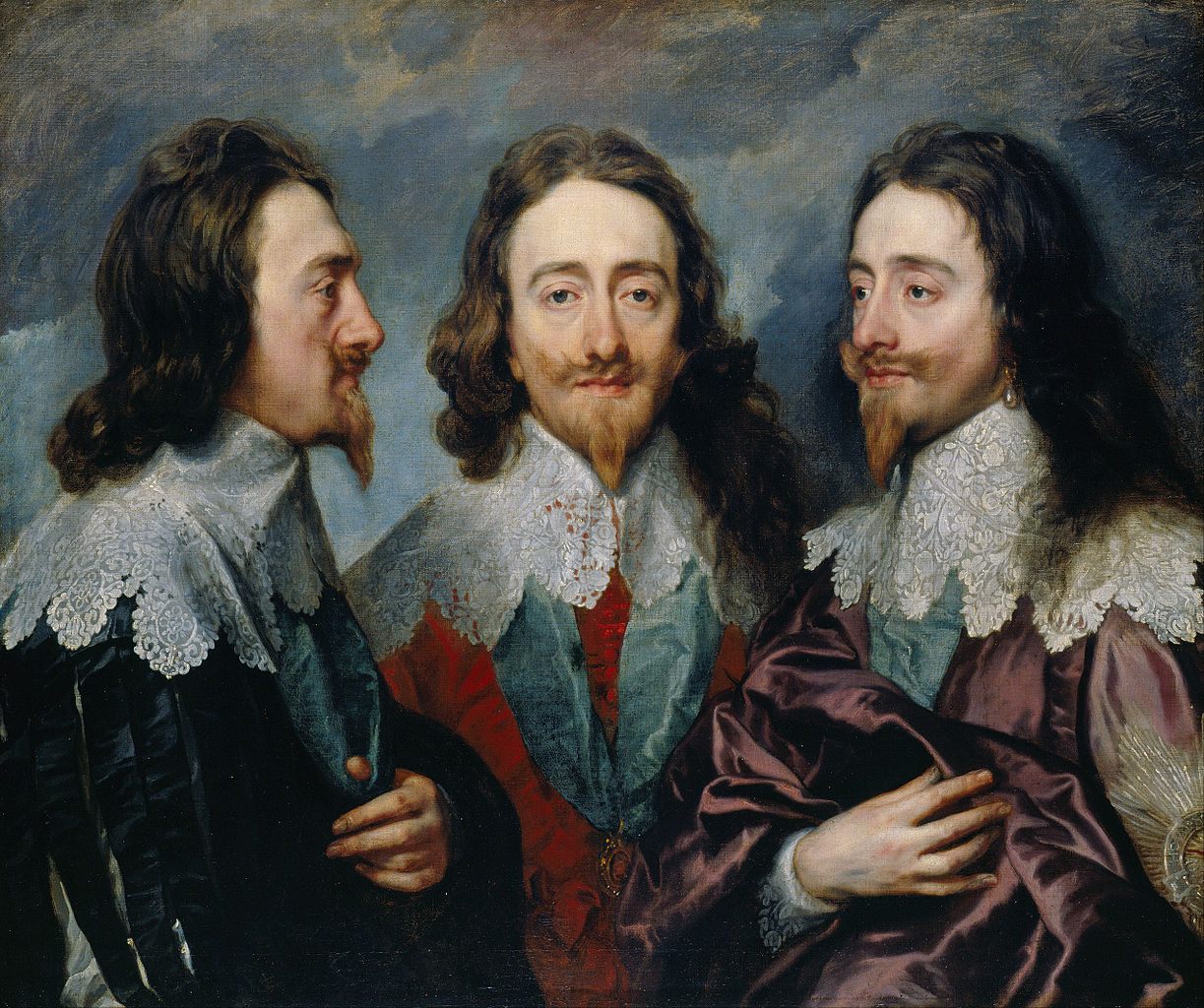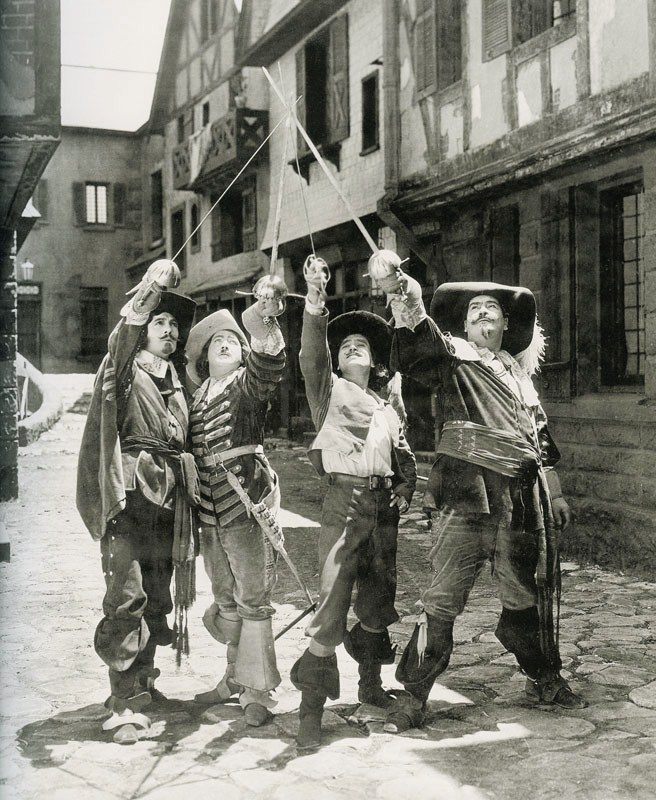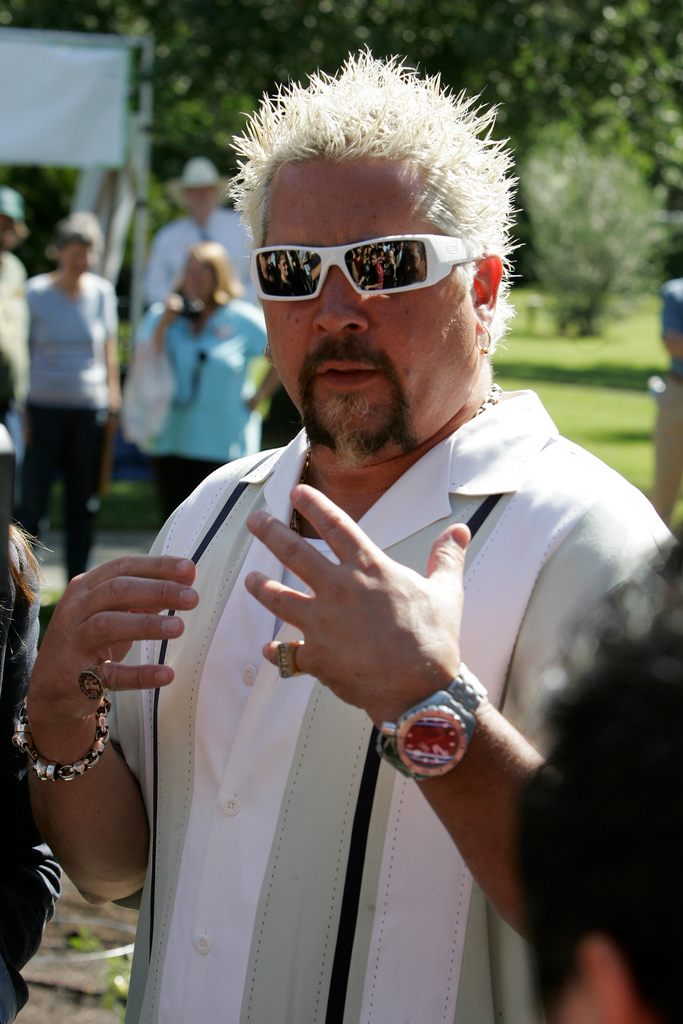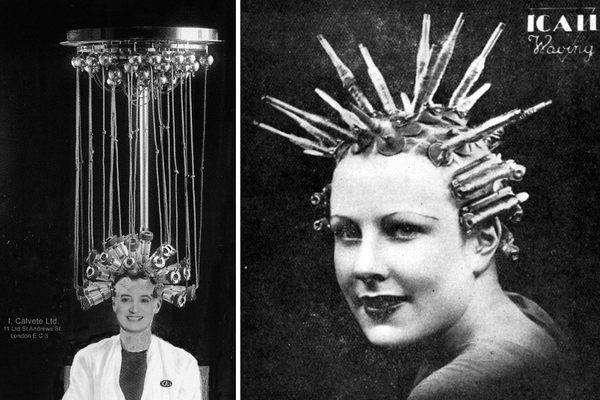We are Living in the Golden Age of the Goatee

A triple portrait of Charles I by painter Anthony Van Dyck. Both men helped popularize the goatee in the 17th century. (Photo: Public Domain/WikiCommons)
This year’s Golden State Warriors basketball team is an extraordinary bunch, shattering records left and right—and yet, there’s something deeply strange about them.
The bulk of the team has either currently has or recently had the same facial hair as Guy Fieri, your least favorite uncle, or Edward Norton during most of the ’90s.
Stephen Curry, Klay Thompson, Draymond Green, Harrison Barnes, Andre Iguodala, Brandon Rush, Shaun Livingston, and many other members of the defending NBA championship team have at various times sported a goatee, but in contrast to Mr. Fieri, can also be easily described as stylish and fashionable young men.
For many, the goatee is a symbol of ‘90s rebellion that’s faded into a classic Midwestern Dad look, a comfortably uncool style of facial hair. But while facial hair styles wax and wane over the years and decades and centuries, facial hair experts agree: We’re in a pretty strange time for men’s facial hair, one not quite like any time in history.
To look at the history of the goatee we have to first decide what a goatee actually is. “Well, there’s no official arbiter of all knowledge on this matter,” laughed Christopher Oldstone-Moore, an academic at Wright State University who studies masculinity and especially beards. (He’s also the author of Of Beards and Men: The Revealing History of Facial Hair.) Oldstone-Moore says that the goatee is a partial beard, meaning parts of the face are clean-shaven and parts are not, and that it must always include the chin. Variations from there abound; the connected, trimmed circle of hair around the mouth is most often called a “full goatee” or just “goatee,” though the University of Toronto’s Allan Peterkin, author of One Thousand Beards: A Cultural History of Facial Hair, refers to this as a “circle beard.”

Steph Curry of the Golden State Warriors. (Photo: Keith Allison/flickr)
If the mustache and chin-beard are not connected, this can sometimes be called a goatee, but is more often defined more precisely based on its length and styling. Sometimes it’s a “Van Dyke,” but if allowed to grow longer and pointier, it’s known as an “imperial.”
The history of the goatee is curious and often erroneous. The name certainly comes from the peculiar long fur underneath the chin of a billy goat. As a result of that, the half-man, half-goat Greek god Pan is usually depicted as having a goatee of some sort. Pan was the god of shepherds, but also was a symbol of wildness. And in turn, as imagery from the Greeks (and elsewhere) was subsumed into Christianity, depictions of Satan often included goat-like, or Pan-like, features: of course the enemy of Christianity would be the primitive, pagan, wild god of the Greeks. But this, thinks Oldstone-Moore, was pretty much coincidental. “You almost never see ancient people wearing what we think of as a goatee,” he says. “I think of the goatee as a modern beard. I don’t think it has a very ancient history at all.” The ancient Egyptians did sometimes wear a false beard, often metallic, known as a postiche, but the line between jewelry and beard is kind of fuzzy there; Egyptians did not usually grow a beard in the shape of the postiche.
The goatee really caught on in the 17th century thanks to a Flemish painter named Anthony van Dyck. Van Dyck was a hugely successful portrait painter who completed paintings of various dukes and queens and princesses and, notably, Charles I. But he also painted many self-portraits, and van Dyck wore a trim partial beard: a small pointed chin-beard and a delicately curved mustache. Charles I wore this style of beard as well, and paintings of both van Dyck and Charles circulated throughout Europe. The beard style of these two men became enormously popular, and was eventually named after the painter, with a slight mutation in spelling to Van Dyke.
“Though it was popular in Europe in the 17th century, in the form of the Van Dyke, goatees and all other facial hair practically disappeared in polite circles in the 18th and early 19th century,” says Sean Trainor, who’s written about the history of facial hair for the Atlantic. Soon enough, it began popping up in less polite circles, and the beard style became associated with soldiers, appearing on the Three Musketeers and Napoleon Bonaparte, and on through to the American Wild West, where it was worn by General Custer and Buffalo Bill. “The goatee has some kind of connection with someone who is a very forceful, assertive person,” says Oldstone-Moore.

The God Pan, frequently depicted with a goatee. (Photo: Public Domain/WikiCommons)
But facial hair trends come in waves, and those waves became shorter and shorter as globalization sped up communications in the 20th century. By the early to mid-1900s, beard styles were rotating out almost by decade: the 1920s and 1930s in the U.S. were primarily beardless, but small beards, including some we’d recognize as goatees, were fashionable among the Beats and jazz musicians in the 1940s. In the 1950s, clean-shaven was the only way to go, but by the 1960s, full beards were in—a sign of rebellion against the square decade that came before. That backed off in the 1970s, when the most popular facial hair style was the mustache, but bounced back in the 1980s, when stubble, at most, was popular.
In the 1990s is where things get more complicated. As a fashion era, that decade was about excess: Swarovski crystals, giant baggy clothes, huge retail chains, more, more, more. And yet the beard style was relatively modest: a trim goatee or soul patch. Oldstone-Moore thinks this is because facial hair moves in short waves, from full to partial beards to no beards and back again—he thinks it’s unlikely that a trend would move from clean-shaven to a full beard. Peterkin agrees; specific facial hair styles, he says, don’t necessarily have any consistent meaning to them. Sporting a goatee in the 1940s made a plenty big enough statement just because sporting any facial hair at all firmly set the wearer against the clean-shaven era just past.

W.F “Buffalo Bill” Cody, in 1875. (Photo: Public Domain/WikiCommons)
But now, a more rebellious beard would be what Peterkin calls a “mountain man” beard, because the previous era, the 1990s, wasn’t clean shaven. These days, the goatee is the status quo, the safe bet, the mainstream look. “Neither conservatively clean-shaved nor radically shaggy, the goatee speaks to the consensus-minded 90s, not to our own moment of extremes,” says Trainor. To place yourself as a something outside the mainstream, you have to go more extreme, a giant beard or rougher beard of some sort. (Going clean shaven is not usually a good way to protest; there are always enough clean-shaven men that going clean-shaven never makes much of a statement.) “When I hear the word goatee, the first people that spring to mind are pot-bellied MLB pitchers, aging country music singers, C-list celebrities like Larry the Cable Guy and Guy Fieri, and suburban cops,” says Trainor.
But there are other ways to understand the cultural meaning of facial hair. “The racial line is quite striking in every respect when it comes to facial hair,” says Oldstone-Moore. Beard styles among black men do not follow in really any way the patterns of beard styles among white men. The mustache, for example, is a particularly fraught facial hair style among white men, with infrequent periods of fashionability and recurrences as a mocking or joking one all other times. Not so among black men: “African-American men have always worn the mustache, and not as a trend,” says Peterkin.

A publicity still from the 1921 film, The Three Musketeers. (Photo: Public Domain/WikiCommons)
According to these beard experts, the goatee exists in a different state of fashionability amongst black men compared with white men. Although despite the heavily goateed Golden State Warriors, Trainor thinks the goatee is on the wane as well—just not quite as far down as it is among white men. “But, even among black men, I think the goatee is a fading fashion – with the beards of everyone from Drake, Common, and Lebron James to Willard Scott and Rick Ross filling the cultural space that was once occupied by the goatee,” he says. I’m not so sure the goatee is exactly on the wane, but certainly it’s true that the goatee is barely seen as a beard in the NBA. On lists of the NBA’s best beards, it’s rare to find more than one or two goatees, even spectacular ones like DeAndre Jordan’s.
There is yet another element to the goatee that gives it perennial popularity: it’s very easy to grow. For men in their late teens or early 20s whose beards are not that full yet, the goatee is much more popular, because the hair on the upper lip and the chin comes in more densely than in any other part of the face. It’s not just age that can make growing full beards difficult: “Different ethnic groups have different capacities to grow facial hair,” says Peterkin. “Like American Indians for example often can’t grow full beards. And for black men there’s often issues with ingrown hairs and so forth while trying to grow beards.” African-American hair tends to be a bit curlier than the hair of those with primarily European descent, which often leads to a patchier or more difficult-to-grow beard; curly hairs can irritate the delicate skin of the face. A goatee might be the only option—but that doesn’t mean men of all races won’t try all sorts of beards.

Goatee-wearer Guy Fieri. (Photo: Kelly Huston/flickr)
This all ties in with one trend that connects facial hair of all men. “Previously in history, if you had a beard, you would keep it for life, it was part of who you were,” says Peterkin. “But now people go back and forth.” Steph Curry, for example, has been clean-shaven, has had a full beard, has had a connected goatee, has had only a chin-beard, and has had a disconnected goatee, all within the past few years. With rare exceptions like James Harden, the beard is not necessarily a fundamental part of a man’s identity anymore; it’s a fun thing to play with, that you can change with the seasons or just however you feel. And some days, you just feel like a postiche.







Follow us on Twitter to get the latest on the world's hidden wonders.
Like us on Facebook to get the latest on the world's hidden wonders.
Follow us on Twitter Like us on Facebook